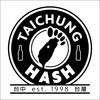Hashing began in Kuala Lumpur, Malaysia, in 1938, when a casual group of British colonial officials and expatriates, Cecil Lee, Frederick "Horse" Thomson, Ronald "Torch" Bennett, and a British accountant of Catalan descent Albert Stephen Ignatius Gispert (A.S Gispert), would meet after work on Monday evenings to run, following a paper trail, through the environs of Kuala Lumpur to get rid of the excesses of the previous weekend. There was another member of the group, John Woodrow, who is rarely credited as one of the founders as he left Malaysia after the war to return home to his family in Scotland.
After running for some months they were approached by the Registrar of Societies, who advised them that, as they were a "group" they would require a Constitution (the aims of which are reproduced below) and a name. A.S. Gispert (known as "G") suggested the name "Hash House Harriers". As bachelors, they were billeted in the Selangor Club Annex, known locally as the Hash House, because of its monotonous food. Their runs were patterned after the traditional British paper chase. A hare was given a head start to blaze a trail, marking his devious way with shreds of paper, all the while pursued by a shouting pack of "harriers." Only the hare knew where he was going - the harriers followed his clues to stay on trail. Apart from the excitement of chasing the hare and solving the clues, reaching the end was its own reward... for there thirsty harriers would find a tub of iced beer (and, in those earlier, more forgiving days, ginger beer and cigarettes).
Hashing died out during World War II after the Japanese invasion of Malaysia, but started again shortly after the war, when the original protagonists, minus "G" who had been killed in the Japanese invasion of Singapore, re-assembled in Kuala Lumpur. Apart from a "one off" chapter, formed in the Italian Riviera, (now the Royal Milan and Bordighera Hash), hashing didn't take off until 1962, when Ian Cumming founded the 2nd kennel in Singapore. From then on, the phenomenon started to grow, spreading through the Far East, Australia, and New Zealand, as well as Europe and North America. Hashing experienced a large growth in popularity during the mid-1970s.
By the end of the 20th century, there were thousands of Hash House Harrier clubs in all parts of the world, with newsletters, directories, and even regional and world hashing conventions. This boom is owed largely to the power of the Internet to provide timely and accurate information on kennels and their events and points of contact. As of 2003, there are two organized HHH groups in Antarctica!
After running for some months they were approached by the Registrar of Societies, who advised them that, as they were a "group" they would require a Constitution (the aims of which are reproduced below) and a name. A.S. Gispert (known as "G") suggested the name "Hash House Harriers". As bachelors, they were billeted in the Selangor Club Annex, known locally as the Hash House, because of its monotonous food. Their runs were patterned after the traditional British paper chase. A hare was given a head start to blaze a trail, marking his devious way with shreds of paper, all the while pursued by a shouting pack of "harriers." Only the hare knew where he was going - the harriers followed his clues to stay on trail. Apart from the excitement of chasing the hare and solving the clues, reaching the end was its own reward... for there thirsty harriers would find a tub of iced beer (and, in those earlier, more forgiving days, ginger beer and cigarettes).
Hashing died out during World War II after the Japanese invasion of Malaysia, but started again shortly after the war, when the original protagonists, minus "G" who had been killed in the Japanese invasion of Singapore, re-assembled in Kuala Lumpur. Apart from a "one off" chapter, formed in the Italian Riviera, (now the Royal Milan and Bordighera Hash), hashing didn't take off until 1962, when Ian Cumming founded the 2nd kennel in Singapore. From then on, the phenomenon started to grow, spreading through the Far East, Australia, and New Zealand, as well as Europe and North America. Hashing experienced a large growth in popularity during the mid-1970s.
By the end of the 20th century, there were thousands of Hash House Harrier clubs in all parts of the world, with newsletters, directories, and even regional and world hashing conventions. This boom is owed largely to the power of the Internet to provide timely and accurate information on kennels and their events and points of contact. As of 2003, there are two organized HHH groups in Antarctica!

